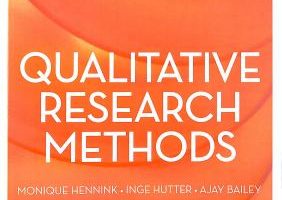Types of Research
Research is often put into categories:
- pure and applied
- quantitative and qualitative
Pure and applied research
Pure research (also known as “basic” or “fundamental” research) is exploratory in nature and is conducted without any practical end-use in mind. It is driven by gut instinct, interest, curiosity or intuition, and simply aims to advance knowledge and to identify/explain relationships between variables. However, as the term “fundamental” suggests, pure research may provide a foundation for further, sometimes applied research.
In general, applied research is not carried out for its own sake but in order to solve specific, practical questions or problems. It tends to be descriptive, rather than exploratory and is often based upon pure research. However, the distinction between applied and pure research may sometimes be unclear; for example, is research into the genetic codes of plants being carried out simply to advance knowledge or for possible future commercial exploitation? It could be argued that the only real difference between these two categories of research is the length of time between research and reasonably foreseeable practical applications, either in the public or private sectors.
Quantitative and qualitative research
The terms “quantitative research” and “qualitative research” are commonly used within the research community and implicitly indicate the nature of research being undertaken and the types of assumptions being made. In reality, many research activities do not fall neatly into one or other category,
Some quantitative studies involve mathematics so complex that very few researchers are able to understand and reproduce the work. In contrast, some qualitative research studies can be carried out in a systematic and logically ordered fashion that may be replicated relatively easily by other researchers. The reverse is also true.
However, most research does not fit clearly into one category or the other. Many studies are best performed using features of both. For example, trends in economic behaviour may be presented as time series graphs, analysed statistically and modelled mathematically, but individual events (i.e. a blip on the graph) may best be explained using a qualitative approach (e.g. an in-depth personal interview).
All research (quantitative or qualitative) is based on some underlying assumptions about what constitutes “valid” research and which research methods are appropriate. In quantitative research, methods of observation are submitted to tests of reliability and validity to establish the credibility of these observations. This can be done using a range of methods, many of which are statistical. Qualitative research checks reliability and validity in the form of prolonged treatment, triangulation, and persistent observation.
Both approaches have their own ways of sampling. Random sampling (or stratified random sampling) is often preferred in quantitative research as it allows the researcher to pick a representation of a larger group and the results can be generalised to the larger group. In qualitative research, sampling is generally not random since the researcher is trying to find a subject or group that is especially suited to the topic area.
The practitioners of quantitative approach argue that it is “objective”, which means that it tries to be unbiased toward its subjects and has no interaction with a study’s participants. Quantitative approaches often focus on tightly controlled variables in a structured setting to provide an explanation of theories, with an emphasis on gathering and validating knowledge through systematic, objective observations. Quantitative research counts and measures behaviour with scales, tools, or interventions
Qualitative research tries to understand the subject’s viewpoint. Qualitative approaches can have flexible variables and tend to provide an in-depth description of a topic or participant.
As a consequence, the approach and methods used by quantitative or qualitative research are different, leading to differences in research design.
There is an ongoing, often quite fierce debate between some practitioners of qualitative and quantitative research. Quantitative researchers often argue that reliability and validity are difficult to prove when doing qualitative research and the approach is too subjective. Quantitative research regards itself as objective and ‘value-free’; many Feminist evaluators have attacked what they call the ‘myth’ of value-free scientific inquiry. Qualitative researchers also argue that most quantitative data is based on qualitative judgement, i.e. numbers can’t be interpreted without understanding the assumptions which lie beneath them.
The key features outlined below for quantitative and qualitative research are generalisations but provide an outline for you.
Choice of research method
Deciding how to research something is an important part of becoming a researcher. You need to make an informed choice about the research methods you will use and be able to justify why you think that they are the most appropriate. You have to take into account what other people have done so it is important to read widely the literature that is related to your proposed area of research. You may have to read up on research methods that you haven’t used before in order to learn whether they are appropriate and how to use them.
These are questions to keep in mind as you consider which research methods are the most appropriate for your project.
- What do you need to find out – how are you going to do this?
- Is there more than one way of finding out what you need?
- What methods have other people used in similar situations and why?
- What are the strengths and limitations of the methods you are considering?
- How do these limitations influence what you can find out and what you can conclude from your results?
Books on research methods
The library has books on research methods which you might find useful. Use the library catalogue to find these books and more.













